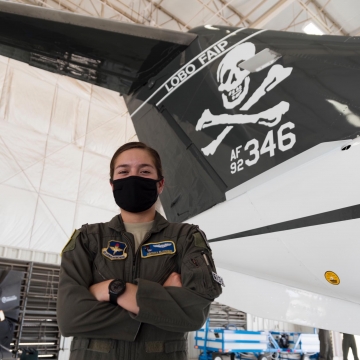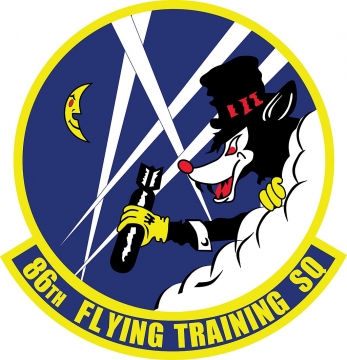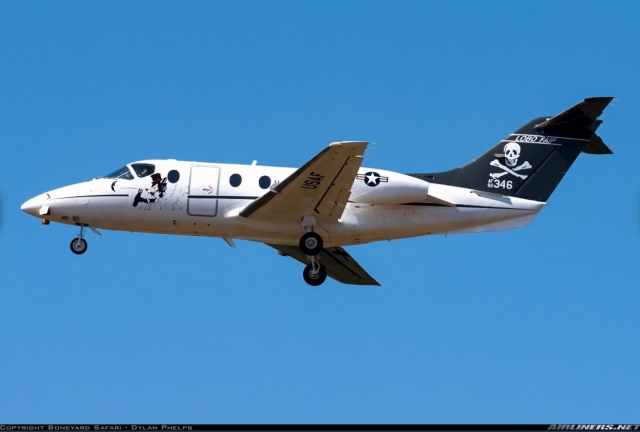Lobo FAIP special markings
On 24 September 2020, Dylan Phelps photographed this T-1A Jayhawk in special "Lobo FAIP" markings at Dyess AFB (TX). The Jayhawk, serial 92-0346 (construction number TT-60), is operated by the 86th Flying Training Squadron "Rio Lobos" at Laughlin AFB (TX).
FAIP stands for First Assignment Instructor Pilot. Of note is that the opposite wing is painted all black and that the squadrons emblem is painted just below the cockpit. The parent unit, 47th Flying Training Wing (FTW), is one of four FTWs operating the T-1A Jayhawk.
The twin-engined Raytheon T-1A Jayhawk (a military version of the Hawker 400) is used by the USAF for advanced pilot training. Students trained on it usually go on to fly cargo aircraft or aerial refuellers. It is also used for the training of Air Force Combat Systems Officers in high and low level flight procedures during the advanced phase of training.
A total of 180 T-1 trainers were delivered between 1992 and 1997. The first T-1A was delivered to Reese AFB (TX) in January 1992.
The Flying Training Wings operating the T-1A Jayhawk are:
- 12th FTW with the 99th FTS "Panthers" ('RA') at Randolph AFB (TX) and 451st FTS ('AP') at NAS Pensacola (FL)
- 14th FTW with the 48th FTS "Alley Cats" ('CB') at Columbus AFB (MS)
- 47th FTW with the 86th FTS "Rio Lobos" ('XL') at Laughlin AFB (TX)
- 71st FTW with the 3rd FTS "Jayhawks" ('VN') at Vance AFB (OK)
Early October 2019, ASES LLc., also known as Field Aerospace, Oklahoma City (OK) was awarded a USD 21,4 million contract by the US Air Force to exercise the so-called Option One for a full rate production to begin for the Raytheon T-1A Jayhawk Avionics Modification Programme. In April 2018, the USAF already awarded a USD 155,7 million modernization contract to Field Aerospace for the upgrade 178 T-1A's with a new integrated avionics system from 2019. Work will be performed at Randolph AFB (TX); Laughlin AFB (TX); Vance AFB (OK); Columbus AFB (MS) and NAS Pensacola (FL), with an expected programme completion date of 14 August 2025. With the modification, the fleet of T-1As will continue to fly into the 2030s.




